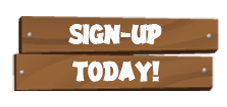I thought it was time to try the ds106 Wiggler Spectroscopy assignment:
Take two photos of the same subject from slightly different angles. Merge the two photos into a single looped, animated gif to create a wiggle stereoscopic image that simulates 3-D.
I decided to use my pal Spike, the metal dog in my front yard, taking about 4 pairs of photos. As ti turned out, my angle of different between each pair was a bit too much, but some of the ones that were similar in angle had enough different to make it interesting:

and from the other side…

I made mine in Photoshop by using the File -> Scripts -> Import into Stacks command, using the option to align objects- this has the effect of keeping Spike mostly motionless but animating the background.
Usually I have to do some futzing back and forth from the timeline view to the frames view in the Animation window. I select all the icons and set the animation speed to the quickest option (0.1s), Keeping the size at 500pixels wide, and 64 colors for the GIF options kept the files small (under 300k each).
Wiggling is fun! Spike is just happy to wiggle all day because…. what else is there to do?







